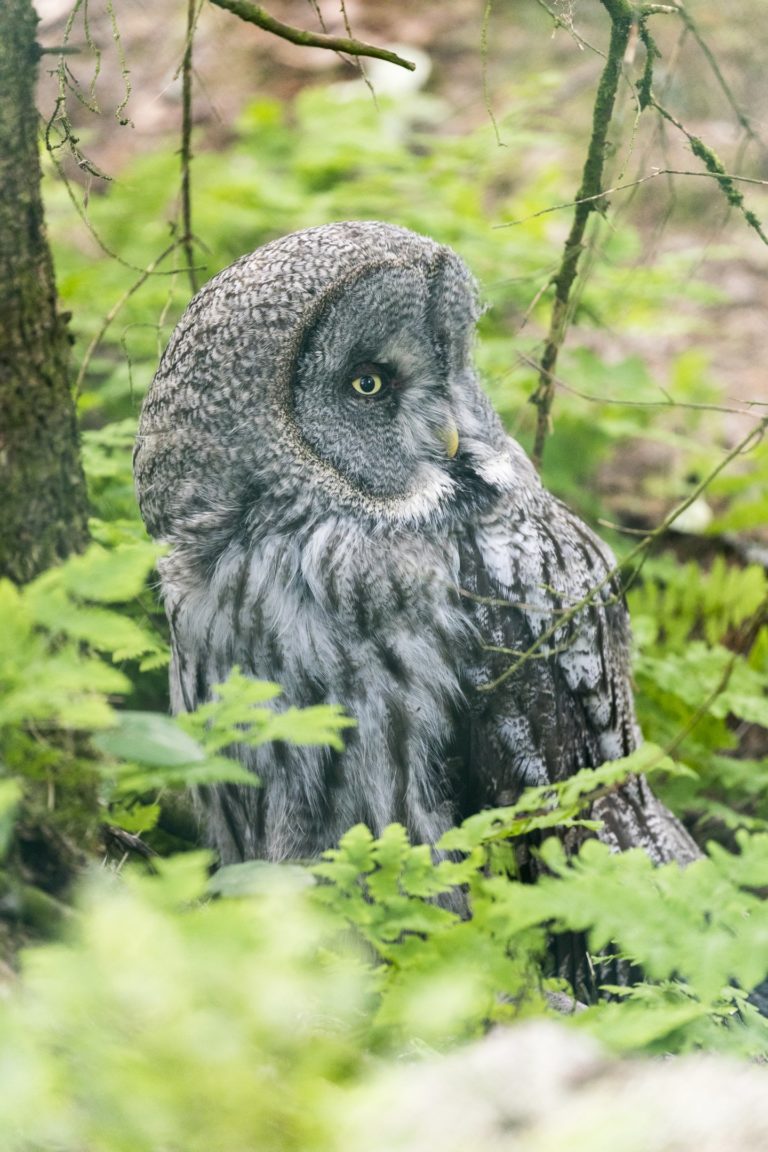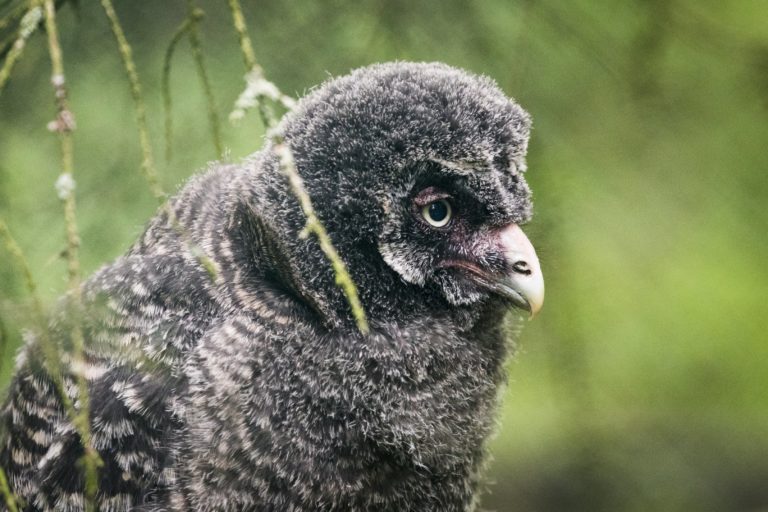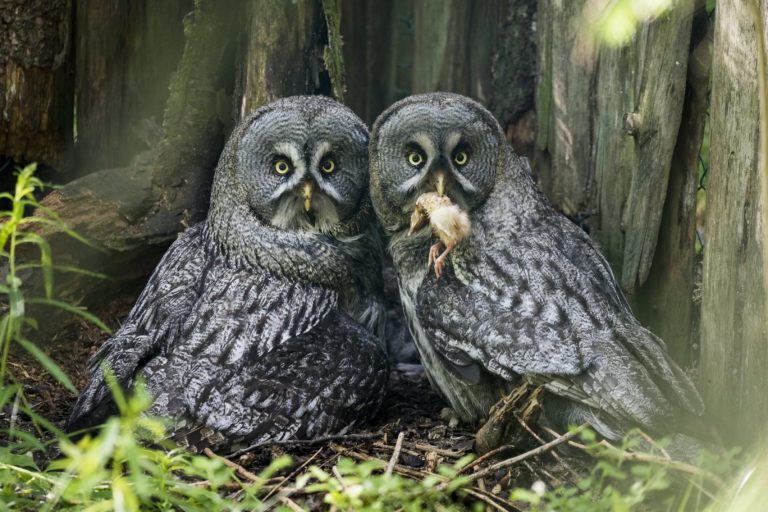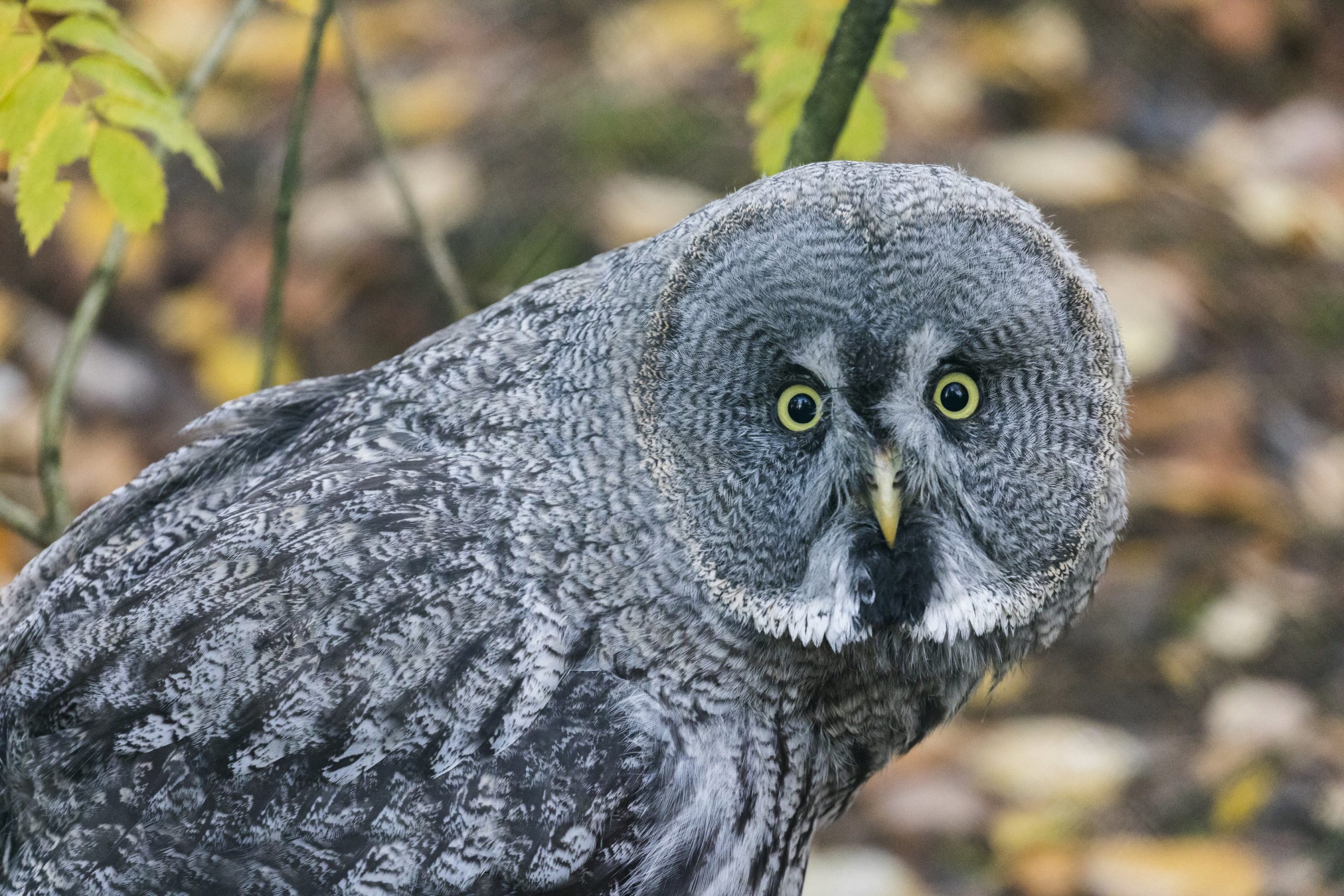
Great grey owl
LIVING HABITS
The great grey owl breeds all over the northern conifer forest belt. The species can be found in Central and North Finland, except the northernmost parts of Lapland. The great grey owl prefers old conifer and mixed forests, nesting in previously used twig-nests of birds of prey. They feed mostly on rodents. The great grey owl is not particularly tied to a certain location, but migrates to wherever it can find food most easily. The species can be active both at day and night.
PROTECTION
The great grey owl is a protected species on nature conservation areas.
ADAPTING TO WINTER
The great grey owl boasts a well isolating, thick plumage. With their excellent hearing they can detect a vole from under the snow, catching it in no time into their mouth.
Great grey owl
Strix nebulosa lapponica
Class: Aves – Birds
Order: Strigiformes – Owls
Family: Strigidae – Owls
Size: Weight: 660–1400g, wingspan: 135-160cm, females larger than males.
Breeding: Female lays 4-5 eggs in April, incubation period: 28-30 days and nights.
Lifespan: According to ringing data, the oldest great grey owl has lived to 15 years of age. The oldest animal on Ranua Wildlife Park is great grey owl, born in 1989.

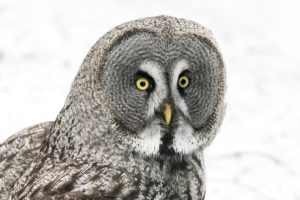
Did you know…
Did you know, that all owls have good hearing, but that of the great grey owl is superior? The plate-like facial features on the large head gather sound waves, transmitting them into their ears. The ears of the great grey owl are asymmetrical, and by turning its head the owl senses the slightest time difference caused by the ears on different levels. Sensing the time difference the great grey owl can detect the exact whereabouts of a prey even from under snow coverage of tens of centimetres.





